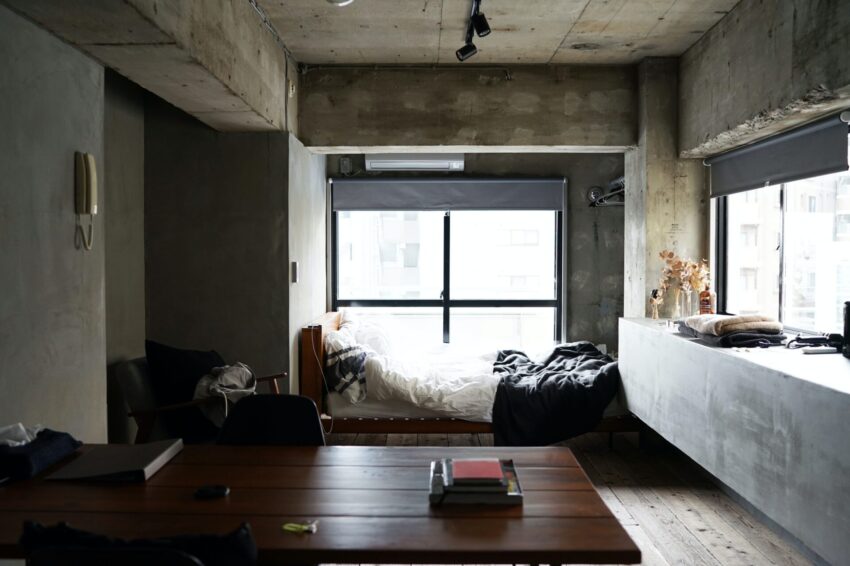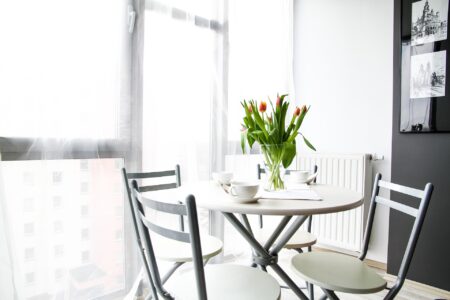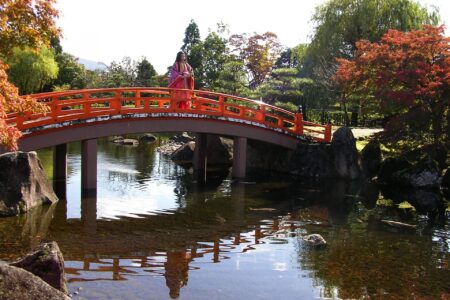A Beginner’s Guide to Apartments in Japan

Top photo: Joseph Albanese on Unsplash
Searching for a place to live is a daunting task, even in the familiarity of your home country and native language. Doing the same in Japan can be terrifying for first-time renters. This guide will hopefully familiarize you with some of the basics of Japanese apartments and what to expect from them.
Part One: Layout
The way that Japanese apartments are advertised is different from Western countries. There is a sort of shorthand unique to the country which quickly conveys the layout of an apartment. This takes the form of an acronym that states what kind of rooms are present in the apartment. L = Living Room, K = Kitchen, D = Dining, and numbers represent how many other rooms (which can be used at the renter’s discretion) exist. For example, 1LDK mean one room (typically your bedroom), a living room, a dining room, and a kitchen. Here’s some typical layouts for an apartment you’d see in Japan.
Refer to the picture titled “2LDK”: two rooms, living room, dining room, and kitchen. There are a few things that I’d like for you, the reader, to take note of. One is that even though there are only five rooms explicitly designated by the layout, there are other “rooms” that exist in the apartment, such as the entrance, a balcony, the bath/shower, and powder room.
This is very common, as the acronym is quite simply just a quick way of letting prospective renters know the more important details of the apartment so that they don’t waste their time with undesirable layouts.
Another thing I’d like to draw your attention to is the living/dining/kitchen area. Readers from western countries may expect all three of those rooms to be completely separate, but that is not the case in Japan. If kitchen space of any sort exists in your Japanese apartment, you have a kitchen. The living room/dining room discrepancy is more confusing. The “L” for “living” designates a space where a person would likely put a sofa/chair and a low table, and the “D” for “dinging” designates space where a person can place a dining table.
Therefore, if a space can do both of these things (and in the case of this apartment, also contain the kitchen) then it’s all of these things. The last things I would like to draw your attention to is how the picture labels the two rooms as “western-style”. We will explore what that means in the second part of this article.
Part Two: Style
Apartments in Japan are typically a mix between traditional Japanese-style and western-style, with the more modern apartments being increasingly more western. To be able to understand that statement fully, it needs a little explanation. Japanese-style means shorter doorways, shoji (rice paper doors), and tatami (woven straw) mats. Western-style means taller doorways, solid sliding doors and regular doors, and hardwood (or fake hardwood) floors. Let’s look at another example (see “Advertisement Example #2”).
This apartment looks similar to the apartment we looked at before in terms of layout (albeit smaller), but one thing in particular stands out as different: the room with the rectangles inside of it. This means that the room’s flooring is tatami mats. You can generally tell the age of an apartment by how western vs Japanese it is, as hardwood floors and solid doors are more durable and easier to clean and replace, and Western-style has become increasingly more chic. Therefore, the newer the apartment, the more western.
I hope that this article has given you a basic understanding of how apartment layouts work in Japan, and that you will now feel more comfortable in any apartment search you may undertake. As long as you keep the basics in mind, you should have no problem in finding what you are looking for in a living space. When it comes to the next step of actually signing for your new abode, well… that’s a story for a future article!
Photo Credits:
Top photo: Joseph Albanese on Unsplash
Articles/photos cited in this article:
JAPANESE APARTMENT LAYOUTS: JAPANESE APARTMENT 101 GUIDES
Living in Japan Part 4: How to Read Apartment Listings
All other content (text) created by the original author and © 2021 MUSUBI by Borderlink
RELATED
-

Get Taught in Tokyo (and Beyond)
Top Photo: Louie Martinez on Unsplash If you are coming to Japan to be a teacher, prepare to be a student alon… -

Give Share House Living a Try!
Top photo: jarmoluk on Pixabay Before coming to Japan, we often imagine what our lives would be like in this n… -

Seasons of Change
Top photo: Pop-san on PhotoAC For over 330 articles, MUSUBI has been your bridge to inner Japan. As March beco…
PEOPLE

Connor Steck
From the US
Started his new life in Japan with a year in Hokkaido!


